INTRODUCTION
MATERIALS AND METHODS
Cadaver study
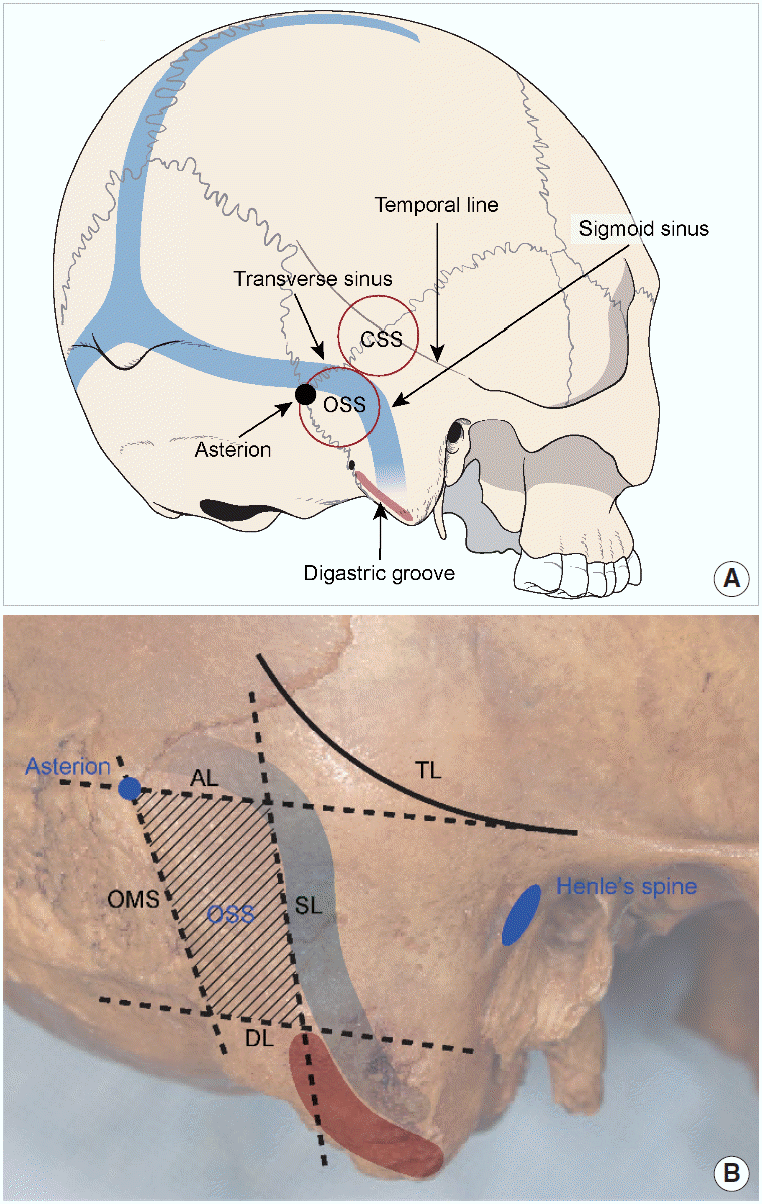 | Fig. 1.(A) The anatomical distribution of the temporal bone shows that the optimal surgical site (OSS), with a relatively flat surface, is a better position for the Baha Attract implant. (B) The four borders of the OSS are the Asterion line (AL), sigmoid sinus line (SL), occipitomastoid suture line (OMS), and digastric groove line (DL). The average distances from the spine of Henle horizontally to the Asterion and to the Sigmoid sinus are necessary to determine the location of the implant during surgery. As the size of the implanted magnet is 27 mm, the area of the OSS should be sufficient. CSS, conventional surgical site; TL, temporal line. |
Preoperative surgical planning of navigation-assisted demarcations on three-dimensional computed tomography
Operative technique with a minimal skin incision
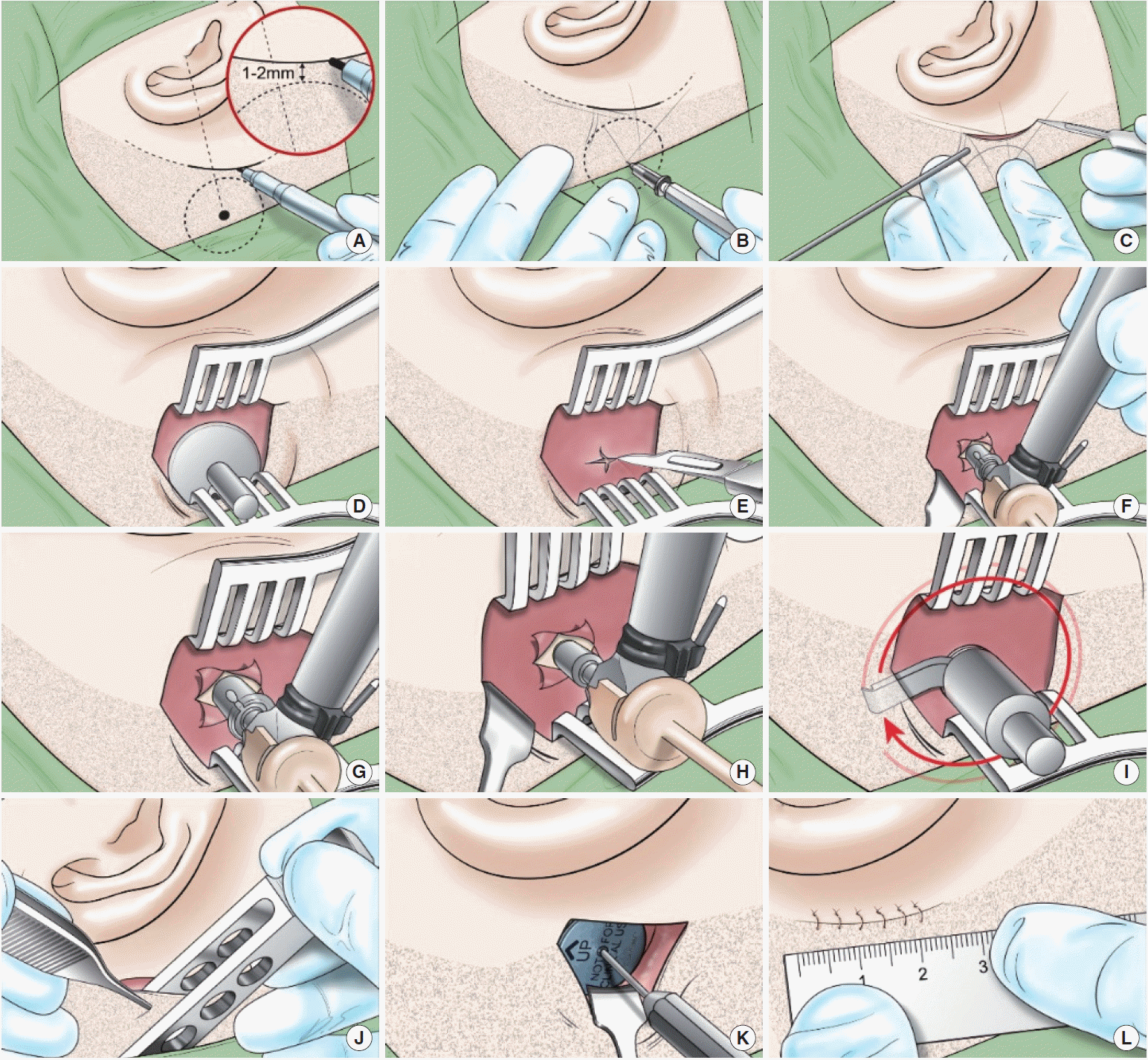 | Fig. 3.The steps of the newly developed surgical procedure for implantation of the Baha Attract. (A) The small incision line along the patient’s hairline was marked. (B) The soft tissue thickness was measured with a thin needle. (C) An incision was made down to the periosteum. (D) The implant magnet template was placed on the periosteum. (E) A cruciate incision was made on the periosteum, and the periosteum was lifted. (F) The bone was drilled with a guide drill to a depth of 4 mm. (G) The hole was widened with the widening drill. (H) The implant was placed with a torque of 40–50 N-cm. (I) The bone bed indicator was used to confirm that the implant did not touch the bone or periosteum around the implant. (J) The thickness of the flap was evaluated with the soft tissue gauge, and should be 3–6 mm. If the skin flap was thicker than the reference point, the flap was thinned to 6 mm. (K) The implanted magnet was attached and screwed clockwise. (L) The skin was sutured to the periosteum over the implanted magnet. In the previous method provided by Cochlear Americas Corporation, a large C-shaped incision with a 150° angle across the hairline remained. Due to the large flap, additional steps were necessary to find a flat area of bone and to avoid the suture lines in the bone. |
Audiologic evaluation and surgery outcomes in three patients
Table 1.
Ethical considerations
RESULTS
Identification of the appropriate position of the implant on the temporal bone
 | Fig. 4.Topographical distributions of the temporal bone. There was no difference between the right and left sides. (A) The distance from the spine of Henle (HS) to the sigmoid sinus (sigmoid) was 2.04±0.01 cm on the right side and 2.14±0.10 cm on the left side (P=0.499). (B) The distance from the HS to the Asterion was 5.05±0.09 cm on the right and 4.97±0.07 cm on the left (P=0.479). (C) The area of the optimal surgical site was 3.74±0.24 cm2 on the right and 3.37±0.18 cm2 on the left (P=0.225). |
Development of a simplified surgical technique for Baha Attract with a small incision
Successful outcomes of surgery and audiologic function
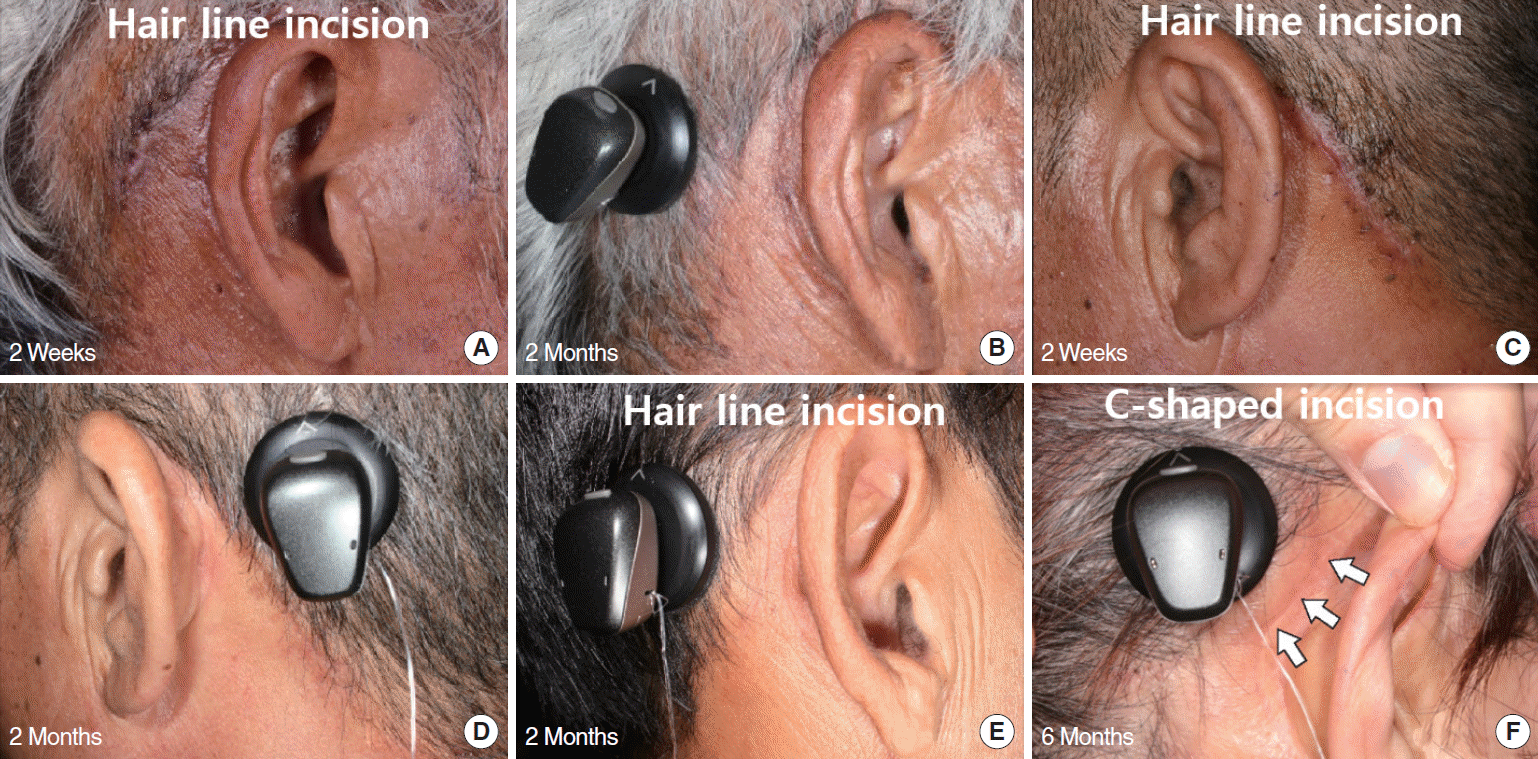 | Fig. 5.The postoperative figures of the incision site. (A) and (C) show small incisions according to the hairlines of two patients 2 weeks after implantation. Patients in (B), (D), and (E) showed no scars in the postauricular area after 2 months. (F) The scar of a 63-year-old woman who received the implant through a large C-shaped incision, 6 months after implantation (white arrows). |
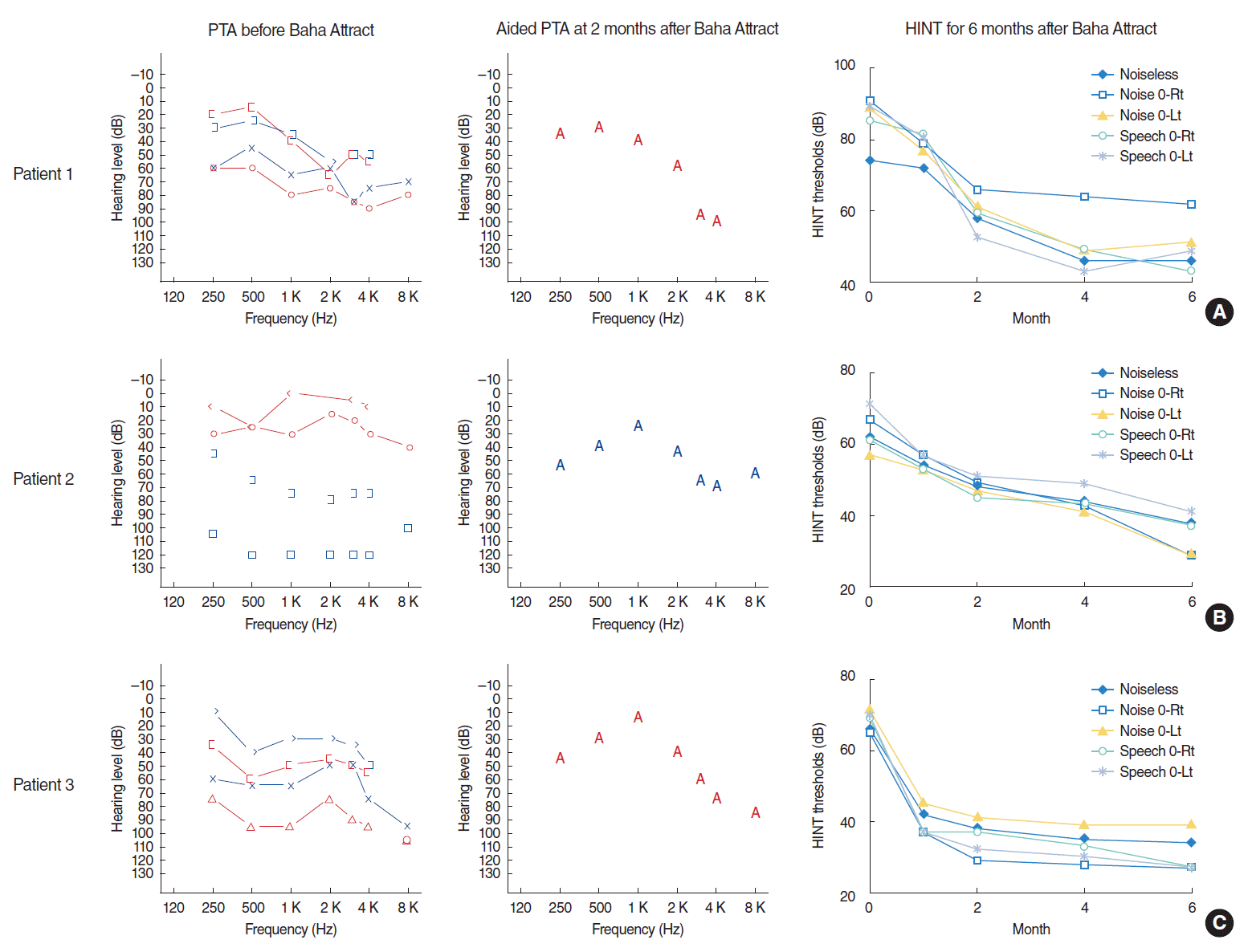 | Fig. 6.Three patients who received the Baha Attract system using simplified surgery with the small incision; all scored well on the audiologic tests (sound field and Hearing in Noise Test [HINT]). Two patients with mixed hearing loss (A, C) as well as patient 2 (B), who had a type of sensorineural hearing loss, also recovered to approximately 40 dB on the surgical side. Compared with preoperative hearing (75, scaled out, and 90 dB), the hearing gains were excellent. The HINT results showed that initial improvement was rapid, and gradual improvement continued during the 6-month follow-up. PTA, pure tone audiometry; Rt, right; Lt, left. |




 PDF
PDF Citation
Citation Print
Print



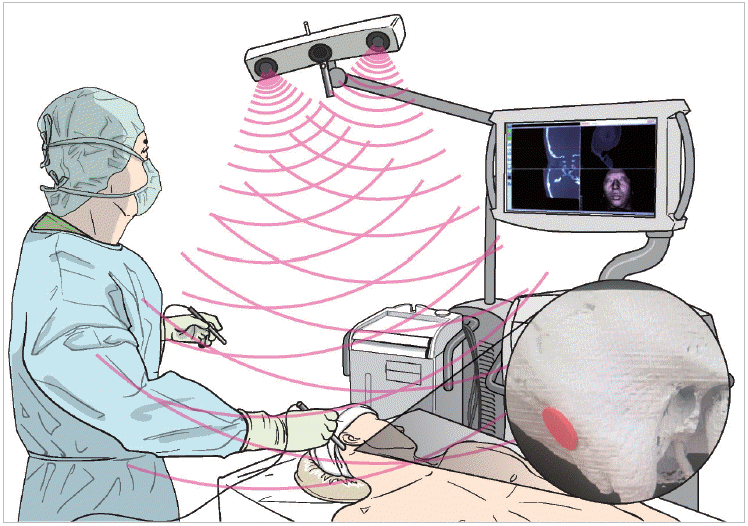
 XML Download
XML Download